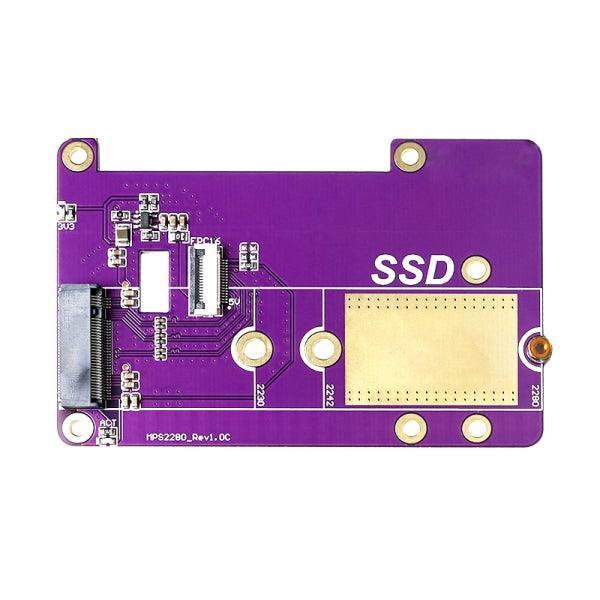



Collapsible content
Product Description
Now Available in Egypt! This SSD expansion board is specifically designed for the Raspberry Pi 5, featuring PCIe and M.2 M-key interfaces that enable the use of high-speed M.2 NVMe solid-state drives. This setup enhances storage performance and data transfer speeds on the Raspberry Pi 5. The expansion board supports booting the system from the NVMe SSD, facilitating storage expansion.
The NV2 SSDs are highly recommended for this product, as they have been tested and confirmed to work perfectly.
Alternatively, the SSD can be used solely for storage expansion, with the system booting from a TF card. This might need clarification as the Raspberry Pi's PCIe interface is likely capable of more than 1A at 5V. Please verify the actual specifications. This might be rephrased for clarity. The SSD expansion board is designed to provide power sufficient for the NVMe SSD to operate at its required voltage of 3.3V. This board is crafted with premium electronic components and features immersion gold technology, manufactured lead-free. It includes four M2.5 fixing holes and a concave design on the top, allowing for easy access to the 40-pin GPIO, streamlining operations.
In essence, the Raspberry Pi 5 PCIe to M.2 NVMe SSD adapter provides enhanced storage scalability and performance, making the Raspberry Pi 5 more suitable for projects and applications that require high storage performance, such as data storage, virtualization, and artificial intelligence.
Note: The rated current marked on the SSD you use is generally 2.5A, 3A, or even higher. However, this current corresponds to the limit when operating in X4 mode. The Raspberry Pi 5 only supports X1 mode, so the actual current used is much lower than the rated current. The design of this board is sufficient to meet your requirements.





